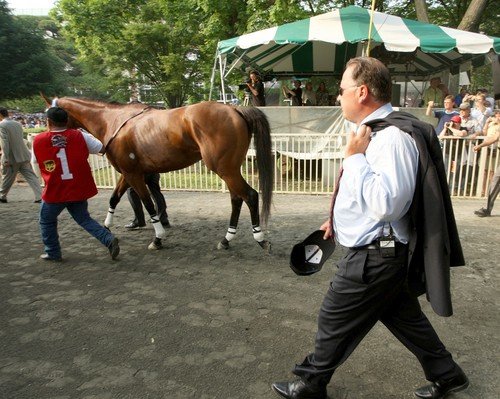
Rick Dutrow, horse trainer of Kentucky Derby and Preakness champion Big Brown, faces a 15-day suspension after one of his horses (Salute the Count) tested positive for twice the allowable levels of the beta-adrenergic agonist Clenbuterol in a post-race sample (”Dutrow Faces Steroid Ban,” June 25).
Of course, even though Clenbuterol is NOT an anabolic steroid, the title of the New York Times article, (”Dutrow faces steroid ban”) suggests the suspension is related to anabolic steroids. The Times cited similarities between clenbuterol and anabolic steroids referring to clenbuterol’s steroidal properties even though the action of Clenbuterol is pharmacologically distinct from androgens.
Rick Dutrow has been called the “Victor Conte of Horse Racing” because of his outspoken admission of performance enhancing drug use in his horses and his repeated pharmaceutical-related drug violations (”Is Dutrow Crown Worthy?,” May 16)
The ARCI report actually contains 72 total entries. Thirteen are for drug-related offenses. Many of the entries are for minor violations… A 1991 suspension in New York for attempting “to provide a false urine sample by means of an apparatus concealed upon his person.”
But what is the real rationale for banning anabolic steroids and PEDs in horse racing? As Mike Dorf points out, steroid-using horses aren’t role models for teenagers and there are numerous other more serious abuses associated with horseracing than steroid use.
In any event, whatever one thinks of the role-model argument with respect to humans, it’s pretty clearly inapplicable to horse racing. Young thoroughbreds are not looking at Big Brown to decide whether to take steroids. Perhaps the steroids are bad for equine health, but among the terrible things that humans do to non-human animals—including to thoroughbred race horses—giving them steroids has to be pretty far down on the list of abuses.